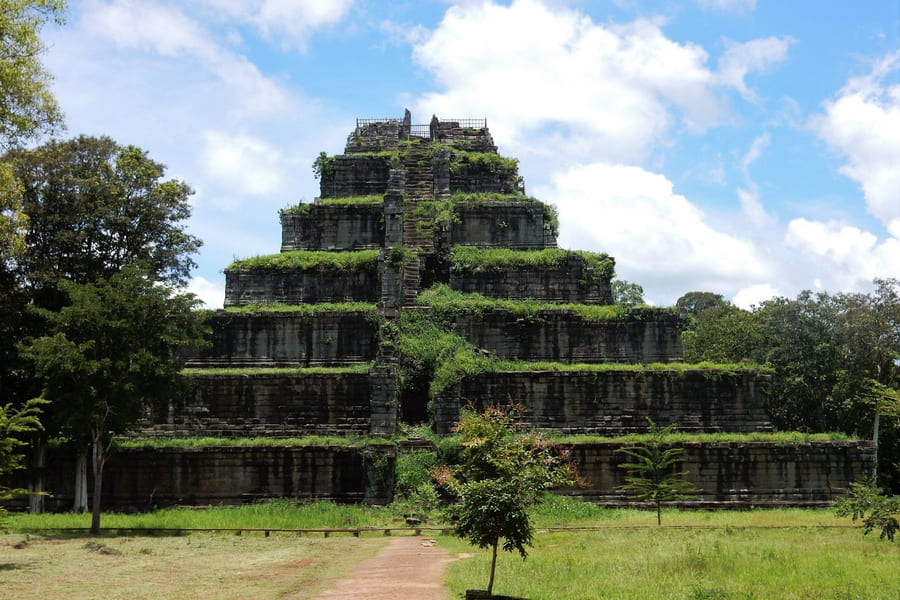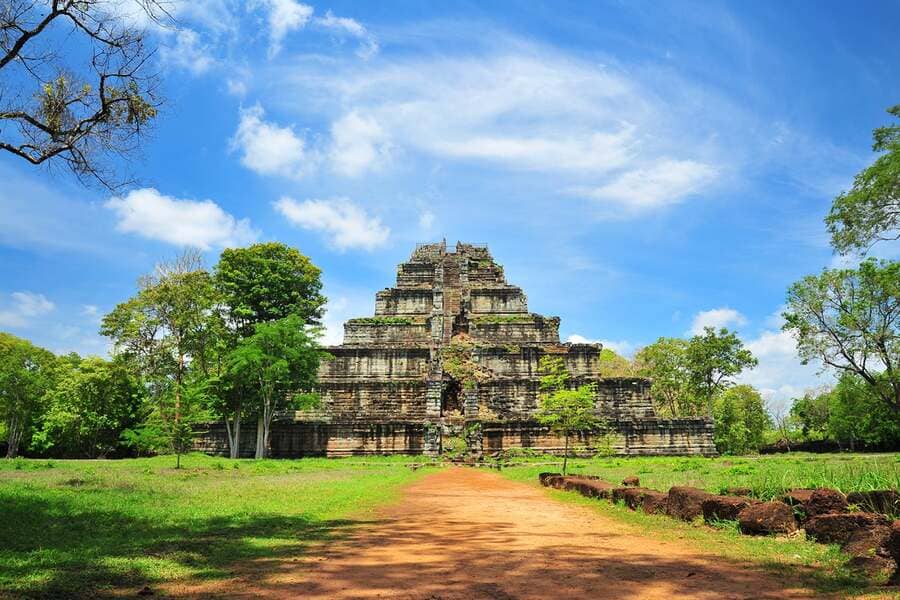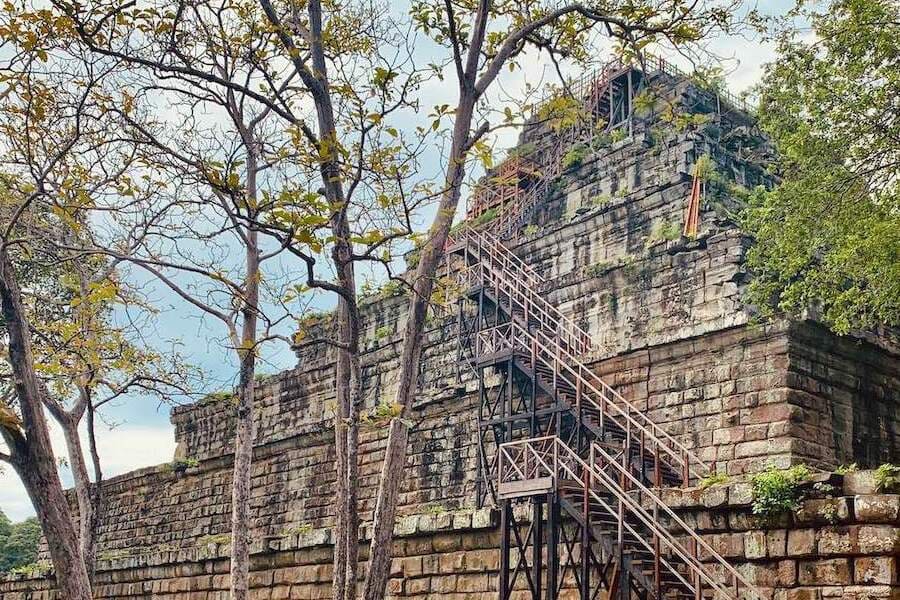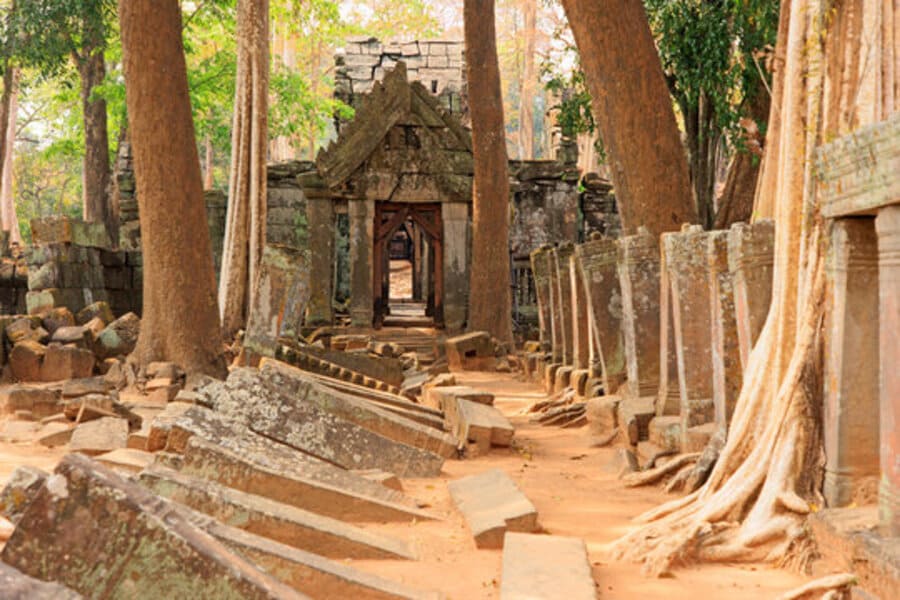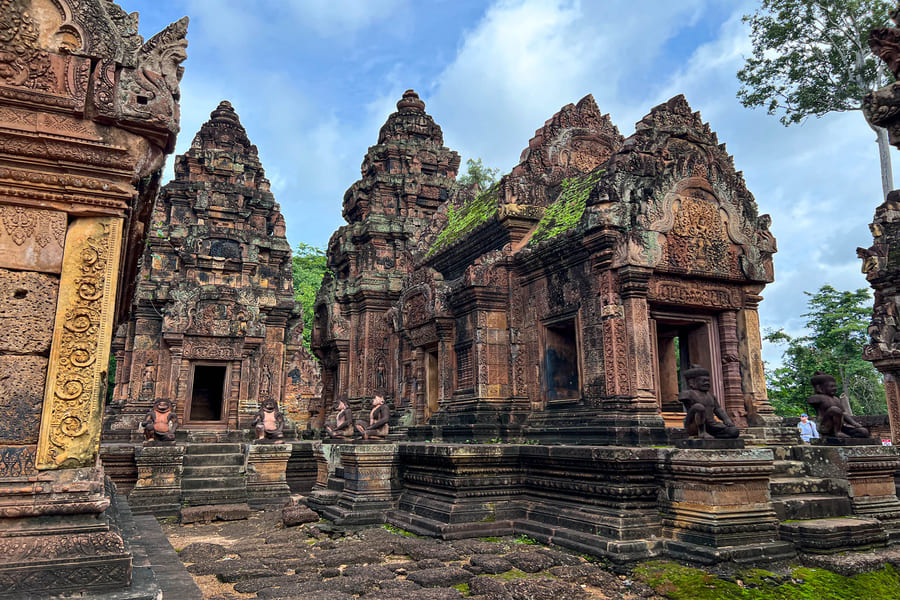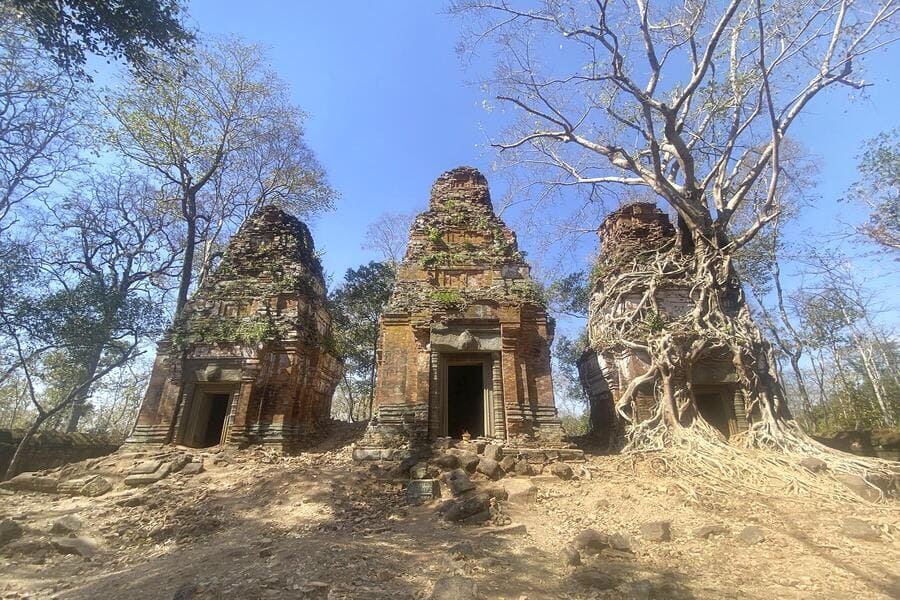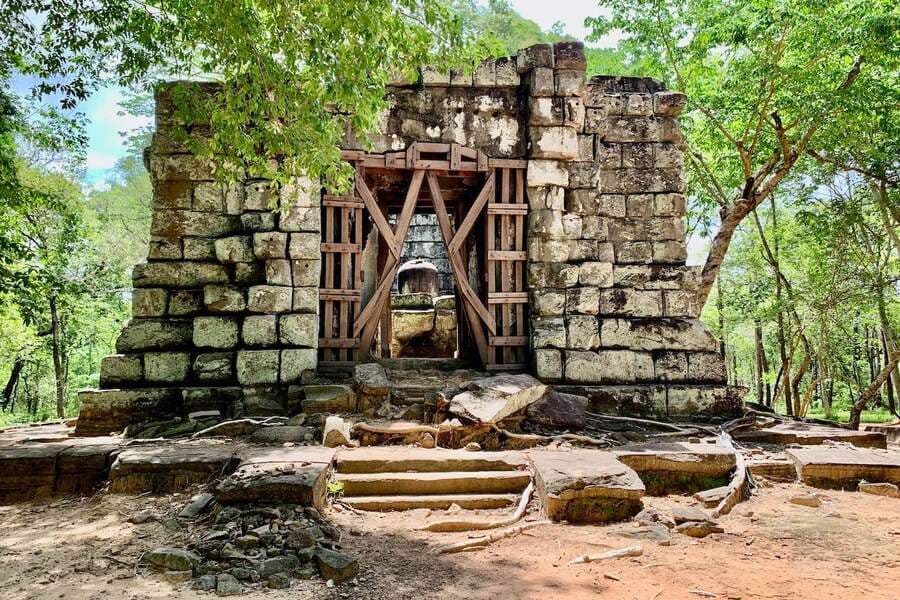Embark on an extraordinary cambodia tour as we journey back in time to uncover the ancient temples of Koh Ker, a hidden gem nestled in the heart of the Cambodian jungle. Captivating exploration of this archaeological wonder, where towering temple pyramids and intricately carved ruins bear witness to a bygone era of Khmer civilization.
Contents
An Overview of the Ancient Temples of Koh Ker
The ancient temples of Koh Ker stand as silent sentinels of Cambodia's rich history and cultural heritage, hidden amidst the dense jungles of the northern province. Dating back to the 10th century during the reign of the Khmer Empire, Koh Ker served as the capital city for a brief but significant period under King Jayavarman IV. Today, the archaeological site is renowned for its remarkable collection of temples, including the iconic Prasat Thom, a towering pyramid temple that dominates the surrounding landscape.
Spread across a sprawling area, the temples of Koh Ker offer a fascinating glimpse into the architectural and artistic achievements of the Khmer civilization. Visitors can marvel at the intricate carvings, towering spires, and serene courtyards that adorn these ancient structures, each bearing testament to the spiritual and cultural significance of the era.
Among the highlights of Koh Ker is the Prasat Thom, a majestic seven-tiered pyramid temple crowned by a sanctuary tower, offering panoramic views of the surrounding jungle. Nearby, the Prasat Prang temple complex features a series of intricately carved sandstone structures, including the iconic "linga and yoni" sculptures, symbolizing fertility and creation.
The Location of the Ancient Temples of Koh Ker and How to get there?
The Ancient Temples of Koh Ker are situated in the northern region of Cambodia, approximately 120 kilometers (75 miles) northeast of the city of Siem Reap. Nestled amidst the dense jungles of the Preah Vihear Province, Koh Ker is renowned for its collection of ancient temples dating back to the 10th century Khmer Empire.
Accessible by road from Siem Reap, the journey to Koh Ker typically takes around 2 to 3 hours, depending on road conditions and traffic. Travelers can hire a private vehicle, join a guided tour, or opt for public transportation to reach the site.
To reach the ancient temples of Koh Ker in Cambodia, you can follow these general steps:
- Travel to Siem Reap: Siem Reap serves as a common starting point for visiting the temples of Koh Ker. You can reach Siem Reap by air from Phnom Penh or other major cities in Southeast Asia. There are also bus services available from neighboring countries like Thailand and Vietnam.
- Arrange Transportation: From Siem Reap, you'll need to arrange transportation to Koh Ker. You can hire a private taxi or tuk-tuk for the journey, or join a guided tour that includes transportation to and from the temples. Alternatively, if you're feeling adventurous, you can rent a motorbike or car and drive yourself to Koh Ker.
- Travel to Koh Ker: The journey from Siem Reap to Koh Ker typically takes around 2-3 hours by road, depending on traffic and road conditions. The route passes through rural countryside, offering glimpses of Cambodian village life along the way.
The History of the Ancient Temples of Koh Ker
The history of the Ancient Temples of Koh Ker is deeply intertwined with the rise and fall of the Khmer Empire, a powerful civilization that once ruled much of Southeast Asia. Koh Ker served as the capital city of the empire during a brief but significant period in the 10th century, under the reign of King Jayavarman IV.
During this time, King Jayavarman IV embarked on an ambitious building campaign, constructing a series of grand temples and monuments in the surrounding area. Among these structures was the iconic Prasat Thom, a massive seven-tiered pyramid temple that served as the centerpiece of the city. The temple complex at Koh Ker expanded rapidly, with numerous other temples and shrines erected to honor the gods and commemorate the king's rule.
The temples of Koh Ker are renowned for their distinctive architectural style, characterized by towering pyramids, intricately carved sandstone facades, and elaborate decorative motifs. The site's remote location amidst the dense jungles of northern Cambodia added to its mystique and allure, attracting pilgrims, artisans, and traders from far and wide.
Despite its brief period as the capital, Koh Ker played a significant role in shaping the cultural and religious landscape of the Khmer Empire. However, the city's prominence waned following the death of King Jayavarman IV, and it was eventually abandoned in favor of other capital cities.
Over the centuries, Koh Ker was reclaimed by the surrounding jungle, its temples gradually enveloped by vegetation and forgotten by the outside world. It wasn't until the 20th century that Koh Ker began to attract attention once again, as archaeologists and historians rediscovered its ancient ruins and sought to uncover its secrets.
Today, the Ancient Temples of Koh Ker stand as a testament to the ingenuity and craftsmanship of the Khmer people, offering a glimpse into a bygone era of splendor and glory. Visitors to Koh Ker can explore these remarkable monuments and marvel at the enduring legacy of Cambodia's rich history and cultural heritage.
Discover the Ancient Temples of Koh Ker
As visitors explore the temple grounds, they'll encounter a sense of awe and wonder at the sheer magnitude of these ancient edifices, their weathered facades hinting at centuries of history and mystery. From the tranquil serenity of the Prasat Bram to the imposing grandeur of the Prasat Krahom, each temple at Koh Ker tells a unique story of Cambodia's illustrious past, inviting travelers to embark on a journey of discovery through the ages.
Here are some highlights of what to discover within this ancient temple complex:
Prasat Thom:
Marvel at the imposing grandeur of Prasat Thom, the centerpiece of Koh Ker. This seven-tiered pyramid temple rises majestically above the surrounding jungle, offering panoramic views of the lush landscape. Climb the steep staircases to reach the summit and admire the breathtaking vistas from the sanctuary tower.
Prasat Prang:
Discover the intricately carved sandstone facades and towering spires of Prasat Prang. This temple complex features a series of ornate structures adorned with elaborate bas-reliefs depicting Hindu deities, mythical creatures, and celestial beings. Admire the exquisite craftsmanship and architectural detail that adorn these ancient edifices.
Linga and Yoni Sculptures:
Explore the sacred symbols of fertility and creation scattered throughout the temple grounds. The linga and yoni sculptures, representing the male and female principles of the Hindu god Shiva, are a common feature in many of Koh Ker's temples. Witness these iconic symbols in various sizes and styles, each bearing testament to the spiritual significance of the site.
Prasat Bram:
Visit the tranquil sanctuary of Prasat Bram, a lesser-known temple nestled amidst the jungle foliage. Admire the serene beauty of this hidden gem, with its weathered stone walls and peaceful ambiance. Take a moment to soak in the serenity of this secluded temple sanctuary.
The ancient temples of Koh Ker stand as a testament to Cambodia's rich cultural heritage and architectural ingenuity. As a lesser-visited archaeological site, Koh Ker provides a unique opportunity for travelers to explore hidden treasures away from the crowds, immersing themselves in the tranquility and mystique of this ancient complex. Whether marveling at the majestic Prasat Thom or wandering through the atmospheric ruins, a visit to the temples of Koh Ker is sure to leave a lasting impression, evoking a sense of wonder and reverence for the wonders of Cambodia's past.

